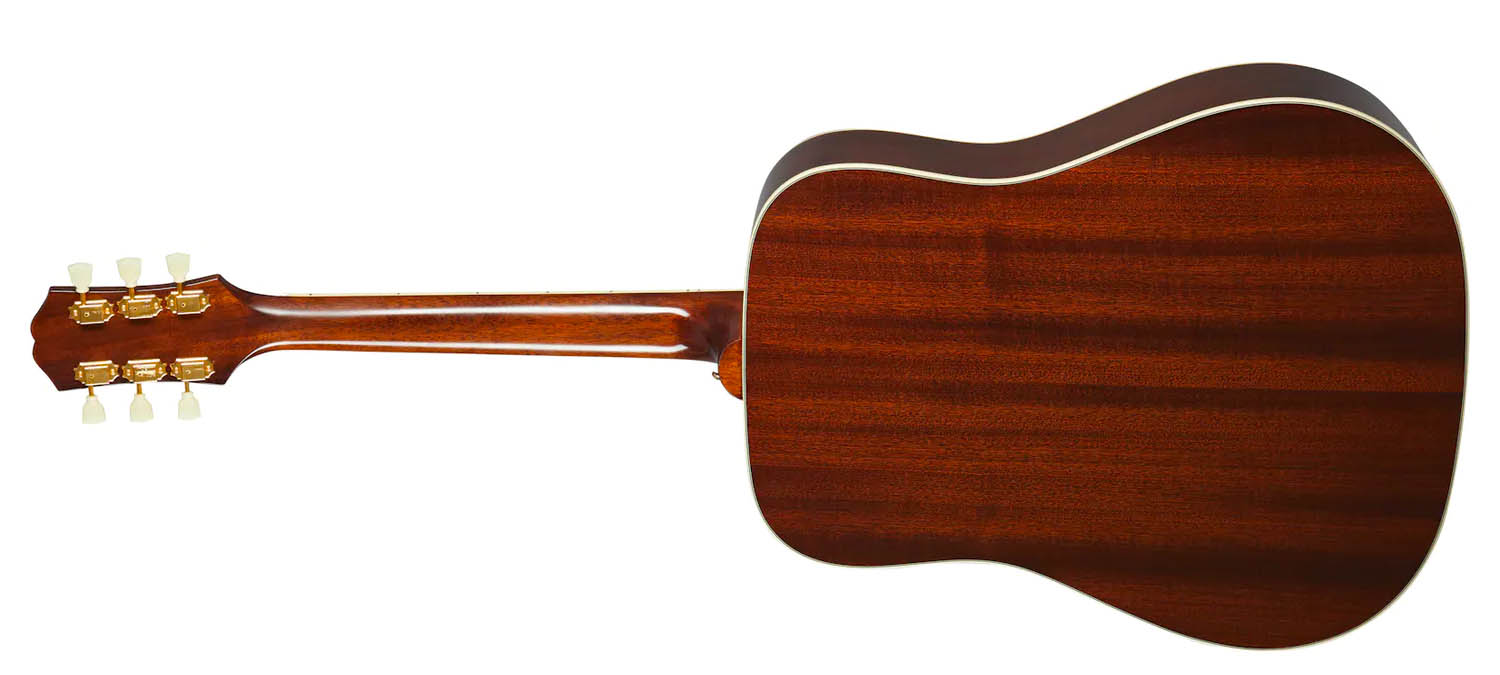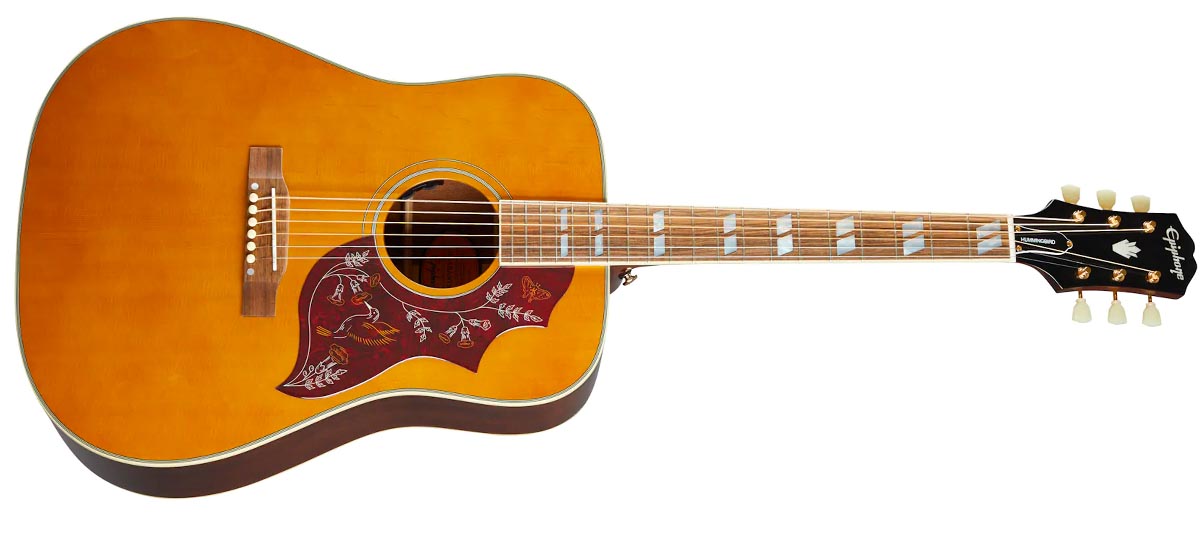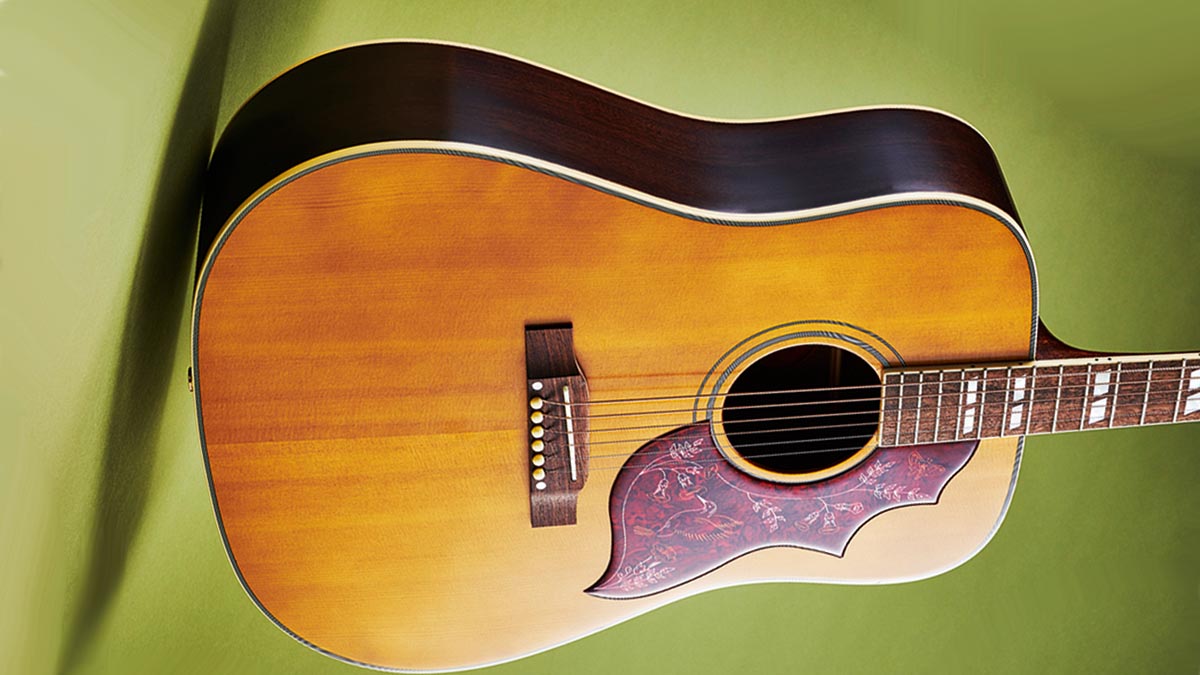Guitar World Verdict
A beautiful square-shouldered acoustic that'll only improve as the years go by, there's a lot to like about Epiphone's high-end take on the Hummingbird. It's playable, looks the part and sounds it too.
Pros
- +
Classy looks.
- +
All solid wood build.
- +
Big 'bird tones.
- +
Quality hardware.
Cons
- -
Battery pack design is disappointing.
- -
Factory setup needed a tweak.
You can trust Guitar World
The Gibson Hummingbird is one of the iconic acoustics; it’s been found in the hands of everyone from Keef to Sheryl Crow, Lenny Kravitz and Radiohead and Dylan. With its ornate pickguard depicting flowers and, yes, a hummingbird, there’s no mistaking this for any other square-shouldered flight of fancy either.
But the Gibson versions have always priced most of us out. So the news last year of a new Epiphone model with the same solid wood back and sides as the Gibson sibling was a welcome feathered friend. Now it’s here, does it sing?
First impressions are a little mixed; don’t get us wrong, this is a stunner. The dark mahogany grain of the neck, back and sides screams premium; bound in aged ivory. The top’s Aged Antique Natural caramel hues bathe in a worn gloss that looks authentically played in. The Hummingbird has history and it shows here.
The neck relief on our guitar needs some significant adjustment before it’s playable and the Fishman preamp’s 9-volt battery pack is also rattling around in the Hummingbird’s body – the weight of the battery has made the velcro pouch holding it come unstuck.

We know this issue because we suffered from it on our ten year old Sigma dreadnought. We’re disappointed to see this design still being used instead of the alternative that places the battery with its own compartment and jack near the rear endpin. With those issues addressed, we can get playing.
Once the truss rod is adjusted the familiarity of Gibson’s 12” radius becomes apparent. It’s a playable neck for leads with notes given a muscular projection here. That comes to the fore for a rich and full-bodied chord experience.
All in all, this is a guitar that doesn’t feel or sound like too much of a compromise next to a Gibson
It’s a classic dreadnought character for us ; no boxy dullness here. It’s resonant and strong across the spectrum, underpinned by lows that add consistent girth to rhythm work. It’s singing rather than sweet in the high end. And with these solid tonewoods, it’s only going to get better with age.
The electro side feels more like a sideshow compared – Gibson have used the ubiquitous Fishman Sonitone system, a meat and potatoes, low key piezo system with volume and tone controls (treble roll off) placed inside.
The Hummingbird negates the lack of a bass control with its own low-end character, but there’s further reassuring/surprising news too; Gibson uses the same £50 system on its Studio ’Bird. All in all, this is a guitar that doesn’t feel or sound like too much of a compromise next to a Gibson.

Specs
- TYPE: Square-shouldered dreadnought-style acoustic-electric
- TOP: Solid Sitka Spruce
- BACK AND SIDES: Solid mahogany
- SCALE LENGTH: 24.72” / 628mm
- NECK: Mahogany
- FINGERBOARD: Indian laurel
- HARDWARE: Epiphone Deluxe tuners with press in gold bushings, bone saddle and nut.
- ELECTRONICS: Undersaddle Fishman Sonicore piezo with Fishman Sonitone soundhole (volume and tone controls)
- FINISH: Aged Antique Natural Gloss (as reviewed), Aged Cherry Sunburst Gloss
- CONTACT: Epiphone

Rob has 20 years of experience writing, reviewing and editing for guitar magazines and websites, including Guitarist and Total Guitar. He's now the Reviews Editor for GuitarWorld.com and MusicRadar guitars, heading up our in-house reviews team to give you in-depth and honest tests of the latest guitar gear. He eats and dreams reviews.
“While the odd corner has clearly been cut, these are true Gibsons with all the individuality that this brand exhibits”: Gibson J-45 Special and Hummingbird Special review
“Fender has stripped back the price – but has it gone too far paring back the sounds, too?” Fender Standard Acoustasonic Telecaster review











